Australia’s aged care sector is facing growing challenges in delivering high-quality, proactive care. One of the most critical aspects of caring for older adults in Residential Aged Care Facilities (RACFs) is timely and accurate monitoring of vital signs. Unfortunately, elderly residents are particularly vulnerable to sudden health deterioration—especially after falls or in the presence of chronic conditions. Nurses are often burdened by using multiple bulky devices, which require physical presence at the bedside and limit the frequency and duration of monitoring.
But what if there were a more innovative, more straightforward way to keep a constant eye on a resident’s health? Patient monitoring doesn’t have to mean more devices or staff—it can mean more innovative technology. This is where innovations like the Vitalleads Smart Vital Signs Monitor for Residential Aged Care (RACF) are making a meaningful difference.
Why Monitoring Vital Signs Matters in Aged Care
In residential aged care, time is critical. A resident’s condition can change rapidly, and missing early warning signs can lead to preventable hospitalisations or even life-threatening situations. Traditional monitoring methods often fall short due to their manual nature and limited reach.
Key challenges faced by aged care staff include:
- Manually recording and interpreting multiple vital signs across different devices
- Limited ability to monitor residents continuously after incidents such as falls
- Difficulty sharing timely health updates with doctors or family members
When residents fall, they are usually monitored closely for a few hours. This involves checking blood pressure, heart rate, temperature, oxygen levels, respiratory rate, and ECG readings. But using separate tools for each parameter and needing constant physical presence makes this process inefficient and difficult to scale.
What Makes a Smart Monitor Essential in Modern Aged Care
A compact, connected device that automates vital signs monitoring solves many of these issues. It empowers nursing staff by simplifying workflow and improving data accuracy. Most importantly, it improves resident outcomes through earlier detection and intervention.
Why smart, portable monitors are changing the game:
- Continuous Monitoring: Elderly residents can decline suddenly. Real-time monitoring ensures that any deterioration is detected instantly.
- Consolidated Technology: Instead of juggling five devices, nurses use one compact monitor.
- Remote Access: Data can be viewed on smartphones or laptops, reducing the need for constant bedside presence.
- Data Sharing: Reports can be instantly shared with physicians or family for collaborative care decisions.
The Challenge: Monitoring Vital Signs After a Fall or During Illness
After a fall, best practices suggest frequent monitoring of vital signs for several hours. However, in most facilities, nurses must:
- Use separate tools for ECG, temperature, BP, and other vitals
- Manually record results
- Stay with the patient, reducing time for other residents
This creates a resource-intensive process that isn’t sustainable when multiple residents require close observation. In high-quality facilities, this challenge is recognised—but addressing it has often meant trade-offs.
A Smarter Solution: Vitalleads Smart Vital Signs Monitor
The Vitalleads Smart Vital Signs Monitor for Residential Aged Care is designed to meet this exact challenge. This TGA-certified medical device allows staff to monitor five key vital signs from a single, portable unit:
- ECG (Electrocardiogram)
- Blood Pressure
- Heart Rate
- Respiratory Rate
- Body Temperature
Nurses can view and record data live on a smartphone, tablet, or computer—in real time, from anywhere nearby. The system supports both continuous and periodic monitoring, making it ideal for post-incident observation or long-term condition management.
Improving Outcomes Through Better Monitoring
Vital signs monitoring has been proven to improve outcomes in hospital and ICU settings. These same benefits apply in residential aged care. Studies have shown that consistent and frequent monitoring:
- Detects early signs of infection or internal bleeding
- Reduces hospitalisation rates by enabling earlier intervention
- Builds confidence among families about the level of care
Additionally, with technology like Vitalleads, these records can be saved, charted, and shared with general practitioners, allied health professionals, or family members—a feature particularly relevant for NDIS participants and those with chronic conditions.
Why this Matters for NDIS and Disability Support Environments ?
While RACFs are the main focus, the same technology is a perfect fit for disability support environments. NDIS participants often live with complex medical needs and benefit greatly from continuous monitoring that doesn’t rely solely on staff presence. A smart monitor:
- Increases independence while maintaining safety
- Supports shared care between providers and families
- Enhances reporting for NDIS compliance and planning
Key Benefits at a Glance
- TGA-Certified medical device trusted for clinical-grade accuracy
- All-in-One Monitoring: ECG, BP, temperature, heart rate, and respiratory rate
- Real-Time Access: View readings live on phones, tablets, or computers
- Portability: Ideal for bedside use and in shared care homes
- Remote Monitoring: Enables remote oversight without compromising resident privacy
Conclusion: The Future of Vital Signs Monitoring is Here
Residential aged care is evolving, and technology is playing a key role in that transformation. By adopting smart, compact, and continuous monitoring tools, facilities can enhance safety, reduce nurse workload, and strengthen connections among residents, healthcare professionals, and their families.
The Vitalleads Smart Vital Signs Monitor for Residential Aged Care is more than just a device—it’s a smarter way to care. If you’re looking to enhance your patient monitoring strategy in RACFs or disability care settings, consider how this kind of innovation can support your team and safeguard your residents.
For more insights and solutions, explore our resources or reach out to learn how to implement smart monitoring in your facility.






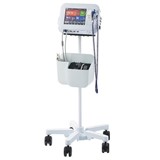
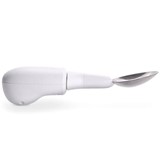




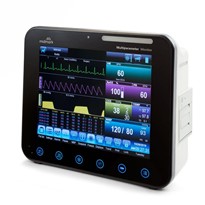
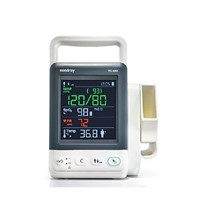


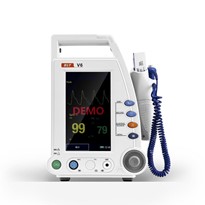

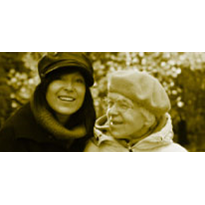


(560%C3%97450px)-205x205.jpg)

-205x205.jpg)